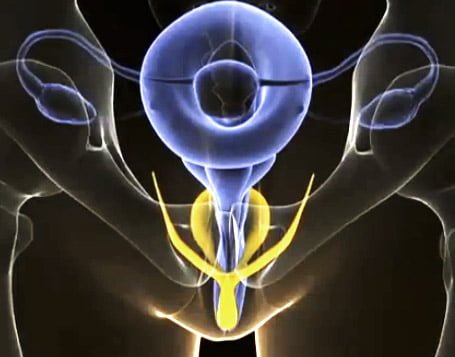Hi Aunt Vadge.
I’m 17, and I don’t know how to navigate fingering myself.
I’ve never inserted anything in my vagina until very recently. I used to be too nervous to penetrate so I would always stick to the outside and it worked.
But I want to be able to have penetrative sex with my boyfriend, so I’m trying to work up to it by starting off with getting used to the feeling of my fingers first.
The problem is, I have no idea what to do. I insert a small portion of my finger, and I’m not sure where to go and it doesn’t feel good. It feels so tight, and when I go farther it only gets tighter.
I use lube and try to make sure I’m aroused enough beforehand but it feels like I’m too nervous to completely be aroused and ready.
I thought I may have vaginismus but I’m not sure.
Do you have any way to help?
Thank you!
Scaredy Cat
Age 17
San Francisco, USA
______
Dear Scaredy Cat,
Welcome to the weird and wonderful world of fingering!
There is no reason for you to think something is ‘wrong’ (i.e. vaginismus) because your vagina feels tight. There is a lot going on when we start ‘entering’ our bodies with fingers, objects and boyfriends.
It can be scary and frankly pretty weird, especially when you’re not turned on, and what’s more, you’re not really even sure what penetration is supposed to feel like.
What it means to be turned on. But like, actually.
When you’re turned on, your clitoral tissue swells up with blood, and your vagina becomes wetter due to increased blood flow. Everything feels different, including what may have previously been boring or uncomfortable sensations.
In your case, being properly turned on is likely the missing link to you enjoying penetration. Once you get the ingredients right, your vagina will naturally open up. It can feel a little weird by yourself at first, but I promise you’ll get the hang of it!
The role of nerves and nervousness in sex
First, you have a goal in mind – penetrative sex with your boyfriend. You’ve been too nervous to even finger yourself before, and so now you’re trying to get yourself ready for your boyfriend’s comparatively enormous penis.
Scary, not sexy. Penises are much bigger than your teensy fingers, and you are not in control of it going into your body – he is. Double scary. It’s like you’re training to climb Mt Everest.
You’re thinking about how to finger yourself as a problem to solve. “If only my vagina wasn’t so tight, I’d be able to have sex with my boyfriend.”
That adds a layer of stress and is fundamentally not hot. Then you’ve leapt to vaginismus to try to explain why fingering yourself is “not working”. You’ve done good sleuthing, but you probably do not have vaginismus.
What is vaginismus?
Vaginismus is simply the name given to a vagina that is tight and painful to put anything into, which can cause distress. There are many causes of vaginismus, from anxiety to pelvic floor dysfunction, all of which are treatable. Your pelvic fairy lights and how to turn them on
You mention practising by yourself to get used to the feeling of your fingers, but that you’re also nervous then. Your task is to first, give yourself a break, you’re new to this, and second, to understand what being turned on really means for your body – physically.
Now for your anatomy lesson.
If you imagine a tangled set of fairy lights in your pelvis. Consider that for these fairy lights to stay on and get brighter, more turned on, you have to work out the closest wire to touch through the skin i.e. through your vaginal walls.
Each of us has a different arrangement of this bundle of fairy lights, the nerves in our pelvis, dictating what feels good and what doesn’t feel like much. Each person is unique, which is why what works for one person doesn’t work for another.
Importantly, the fairy lights have to be on before you try to keep them on and make them brighter! If the fairy lights are off—like when you’re nervous—you’re not going to feel what you are seeking: pleasure.
Fingering yourself will just feel strange or sore or boring and then you’ll psyche yourself out thinking something is wrong with you.
Imagine that making out with your boyfriend gets you turned on. The fairy lights are on, even if they are faint.
It’s important to get the fairy lights to a good level of brightness before you try to find the wires to push on to keep them going and make them brighter.
What bright fairy lights – a turned-on vagina – feels like
The surge of blood required to turn the fairy lights on in the first place completely changes your vaginal environment.
Your clitoris, which is actually huge and has internal structures you can’t see from the outside, swells up like an erect penis does. The fairy lights are on when you have what you might like to call a lady boner.

If you don’t have a lady boner (erect clitoral tissue), you won’t be able to feel anything. If you are nervous, the wrong part of your nervous system is turned on, and it shuts down your ability to become aroused. If you’re anxious, the fairy lights will always be off, and you won’t be able to get a lady boner.
No lady boner means no pleasure. Importantly, feeling nervous shuts off your fairy lights at the switch and pulls out the plug. So learning to do this on your own and feeling comfortable with the process is key to your relaxing and being able to enjoy penetration.
To do this, you need to be all about you. Forget your boyfriend for a moment.
What to do next – the fingering experimenting
Interestingly, the time of your menstrual cycle that you’re in will can make a material difference to how turned on you get, and how easily.
When you’re due to ovulate next (use a period tracker), make a date with yourself and put some time aside for masturbating. If you try at other times of your cycle, you may find it more difficult to muster up the enthusiasm for this experiment. At ovulation, you become more responsive and easy to turn on.
You’ve already done the heavy lifting with your other self-pleasure – and it worked – so do your other types of successful self-pleasuring first, but don’t orgasm, and then try a little new stuff with your vaginal entrance. The fairy lights should be on first.
‘Round the outside, ‘Round the outside
When you are touching your clitoris, wet or lube your fingers, and without penetrating, gently rub the tips of your fingers around the opening to your vagina for a little while.
There are so many nerve endings just in and around the entrance of your vagina, it’s amazing, but not that many nerve endings in the vaginal canal itself. This can be why the vagina doesn’t feel like much, and how important the internal clitoral structures are to female pleasure.
Spend some time exploring the entrance to your vagina. Don’t go any further than that unless you feel like you want to, and by want to, I mean that your vagina wants you to.
Another trick is to squeeze your pelvic floor muscles and then relax them about 10 times. This will bring some blood to the area and help your vagina ‘wake up’. Try this a few times and just feel the sensation in your vagina and pelvis. Repeat as necessary.
Diving in when the time is right
When it seems like a good time, start slowly inserting one finger into your vagina and gently rotate it around and feel the insides of your vaginal walls.
The bottom wall isn’t that exciting, but the top wall is the other side of your huge, incredible clitoral structures, and if you’ve got a lady boner, the front wall will feel completely different than it did before when your fairy lights weren’t on.
Slide your finger slowly in and out a little, and experiment with how the different walls feel. Keep your clitoral stimulation going during this time – the two together make this action feel good. You can try two fingers if you want.
Vaginal penetration without the clitoris doesn’t usually work well – remember this when you’re with your boyfriend too.
Adjusting your position for successful penetration
When you masturbate, the position you are in might make a big difference to how things feel. For example, you might like to lie on your front and rub your clitoris on a pillow or the sheets. You might like to crouch and poke your butt out and finger yourself from behind.
Try the same action but in different positions and see if any tickle your fancy more than others.
That’s deep, baby
Your fingers are only so long, so once you get the hang of how your fingers feel (or get bored of it), you can try inserting something bigger into your vagina.
Deeper inside, near your cervix, can feel fantastic, and something bigger will push more firmly on your clitoral structures, which you might enjoy even more than just your fingers.
If you don’t have a dildo of your own yet, there are some household objects that will suffice, but there are some tips as to what to use and what not to use.
Make sure it’s clean and doesn’t have sharp edges. Remember, your vagina will suck objects inside after a certain point of insertion, so make sure you have something to hang onto!
You can do it!
Being properly turned on is the key to enjoying sex and is how to take something scary and turn it into a lifetime of great sex.
You sound like you’re very close to having a great time, so go forth and feel absolutely confident that you’ll work it out – and that will take some fiddling.
Happy fiddling!
Love,
Aunt Vadge
References1–3
- 1.O’CONNELL HE, SANJEEVAN KV, HUTSON JM. ANATOMY OF THE CLITORIS. Journal of Urology. Published online October 2005:1189-1195. doi:10.1097/01.ju.0000173639.38898.cd
- 2.O’CONNELL HE, DeLANCEY JOL. CLITORAL ANATOMY IN NULLIPAROUS, HEALTHY, PREMENOPAUSAL VOLUNTEERS USING UNENHANCED MAGNETIC RESONANCE IMAGING. Journal of Urology. Published online June 2005:2060-2063. doi:10.1097/01.ju.0000158446.21396.c0
- 3.Kontula O, Miettinen A. Determinants of female sexual orgasms. Socioaffective Neuroscience & Psychology. Published online January 2016:31624. doi:10.3402/snp.v6.31624
Get a fresh perspective with a qualified, experienced vulvovaginal specialist naturopath.
This product has multiple variants. The options may be chosen on the product pageThe most comprehensive vaginal microbiome test you can take at home, brought to you by world-leading vaginal microbiome scientists at Juno Bio.
Easy-to-use BV and AV treatment program.
Promote and support a protective vaginal microbiome with tailored probiotic species.






